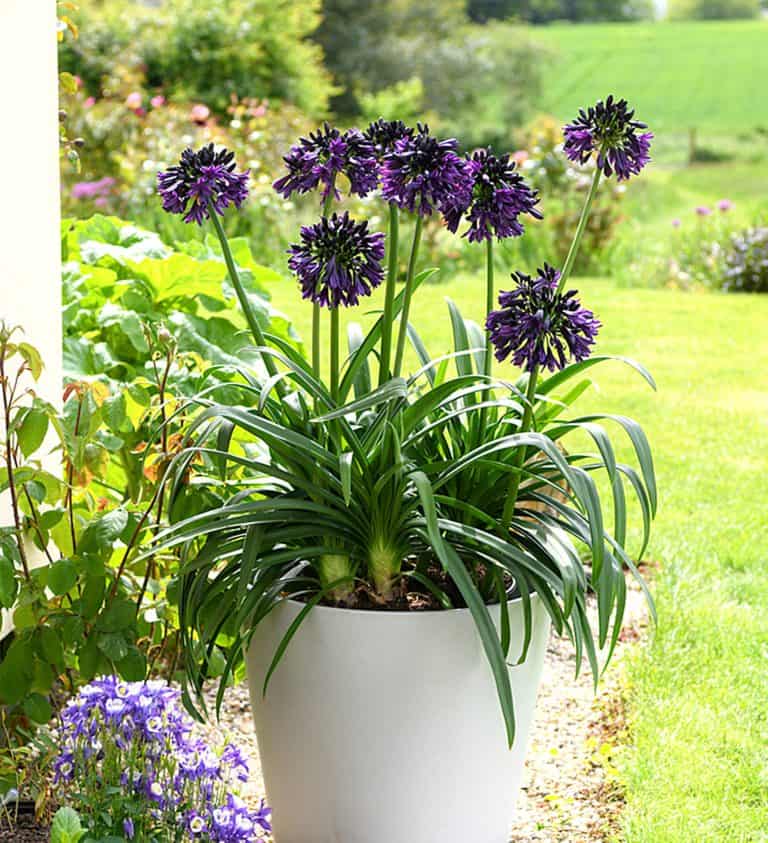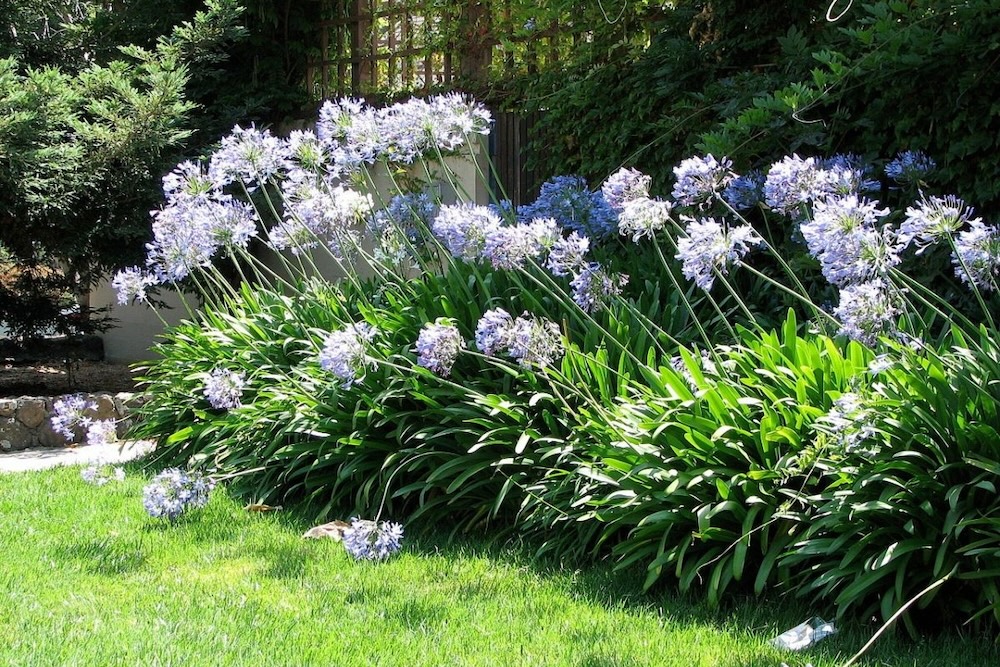Mastering the Art of Agapanthus Care: Crucial Steps for Healthy And Balanced Development and Vivid Blooms
In the world of gardening, the cultivation of agapanthus stands as a fulfilling endeavor for those that look for to support these classy blooming plants. With their striking flowers and stylish foliage, agapanthus has actually captured the attention of gardeners worldwide. Nevertheless, accomplishing optimal development and vivid blooms calls for a nuanced strategy that incorporates different crucial steps. From choosing the ideal variety to mastering trimming strategies, the journey towards growing thriving agapanthus plants is complex and holds the essential to opening the full possibility of these botanical treasures.

Picking the Right Agapanthus Range

When selecting the right Agapanthus variety for your garden, consider variables such as environment suitability, blossom color, and development habit. Agapanthus, typically referred to as Lily of the Nile or African lily, comes in a selection of shades varying from tones of purple and blue to white. Choose a blossom color that complements your existing garden scheme to produce a harmonious landscape. Additionally, take into consideration the environment in your area to make sure the Agapanthus variety you choose can prosper in your details conditions. Some varieties are more forgiving of chilly temperature levels, while others like warmer environments. Comprehending the growth habit of different Agapanthus selections is important for appropriate placement within your garden. Some ranges have a clumping growth practice, ideal for boundaries or containers, while others have an even more spreading nature, appropriate for ground cover or mass growings. By very carefully assessing these factors, you can choose the perfect Agapanthus range to enhance the appeal of your yard.
Perfect Growing Problems
Considering the ideal environmental requirements is vital for successful Agapanthus growing. Agapanthus thrives in well-draining dirt with a somewhat acidic to neutral pH level. When growing, select a place that receives full sunshine to partial shade. In hotter climates, supplying some afternoon shade can prevent scorching of the leaves. Agapanthus plants are sensitive to chilly temperatures and must be safeguarded from frost during winter season.
To make certain healthy and balanced growth and vivid flowers, plant Agapanthus bulbs at a deepness of regarding 2-4 inches and area them 8-12 inches apart. Including organic matter, such as garden compost, to the soil can enhance drain and fertility, promoting robust origin advancement. Mulching around the base of the plants aids retain dampness and suppresses weed development. Routine watering is essential, particularly during the expanding season, to maintain the soil regularly wet but not waterlogged.
Watering and Feeding Tips
Maintaining proper wetness degrees and offering important nutrients are key aspects in the treatment routine for Agapanthus plants. When it comes to watering Agapanthus, it is important to strike a balance. These plants prefer constantly damp soil but are vulnerable to root rot if overwatered.
Fertilizing Agapanthus is click here now essential for advertising healthy and balanced growth and prolific blossoms. Apply a well balanced fertilizer, such as a 10-10-10 formula, in the very early springtime as new development emerges. By complying with these watering and fertilizing pointers, you can ensure your Agapanthus plants flourish and create lively, durable blooms.
Trimming Methods for Agapanthus
Pruning Agapanthus plants at the suitable times and with correct strategies is essential for keeping their health and wellness and promoting ideal development and flowering. The excellent time to prune Agapanthus is in late winter months or very early springtime before new growth emerges. Beginning by eliminating any dead or yellowing fallen leaves near the base of the plant. Cut view publisher site them as close to the ground as feasible without harming the arising shoots.
For flowered stems, wait up until the blossoms have actually withered and after that cut them back to the base. This not only cleans the plant's appearance but likewise motivates the development of new flower buds. Deadheading invested blossoms can likewise reroute the plant's energy right into generating even more blossoms instead than setting seeds. However, if you wish to accumulate seeds for breeding, leave some blossoms to dry and mature on the plant.
Bear in mind to make use of tidy, sharp tools to make precise cuts and lower the risk of introducing illness. Agapanthus. Regular trimming will certainly aid keep your Agapanthus looking healthy and balanced and neat while guaranteeing an abundant display of stunning flowers
Taking Care Of Common Parasites and Diseases
After guaranteeing appropriate trimming strategies for Agapanthus, it is necessary to deal with common pests and illness that can influence the health and vitality of these plants. One typical bug that influences Agapanthus is the Agapanthus gall midge.
Another usual concern is fungal leaf spot, which presents as dark sores on the fallen leaves. To stop fungal illness, ensure good air blood circulation around the plants, stay clear of overhanging watering, and get rid of any kind of contaminated fallen leaves promptly. Additionally, Agapanthus plants can experience from root rot if they are grown in poorly draining dirt. To avoid this, plant Agapanthus in well-draining soil and stay clear of overwatering. By being attentive and taking timely action against diseases and pests, you can help your Agapanthus plants flourish and generate lively blossoms.

Verdict
In verdict, grasping the art of agapanthus treatment involves selecting the right range, offering perfect planting problems, correct watering and fertilizing, ideal trimming methods, and dealing with common parasites and diseases. By adhering to these necessary steps, you can make sure healthy and balanced growth and lively blooms for your agapanthus plants. Remember to on a regular basis keep track of and maintain your plants to advertise their general well-being and longevity.
To make sure healthy and balanced growth and vivid blooms, plant Agapanthus bulbs at a deepness check this of about 2-4 inches and space them 8-12 inches apart. By complying with these watering and feeding ideas, you can ensure your Agapanthus plants prosper and produce lively, resilient blooms.
One common insect that affects Agapanthus is the Agapanthus gall midget. Additionally, Agapanthus plants can endure from origin rot if they are grown in badly draining pipes dirt. By adhering to these essential steps, you can guarantee healthy development and vibrant blooms for your agapanthus plants.